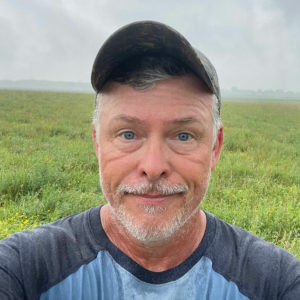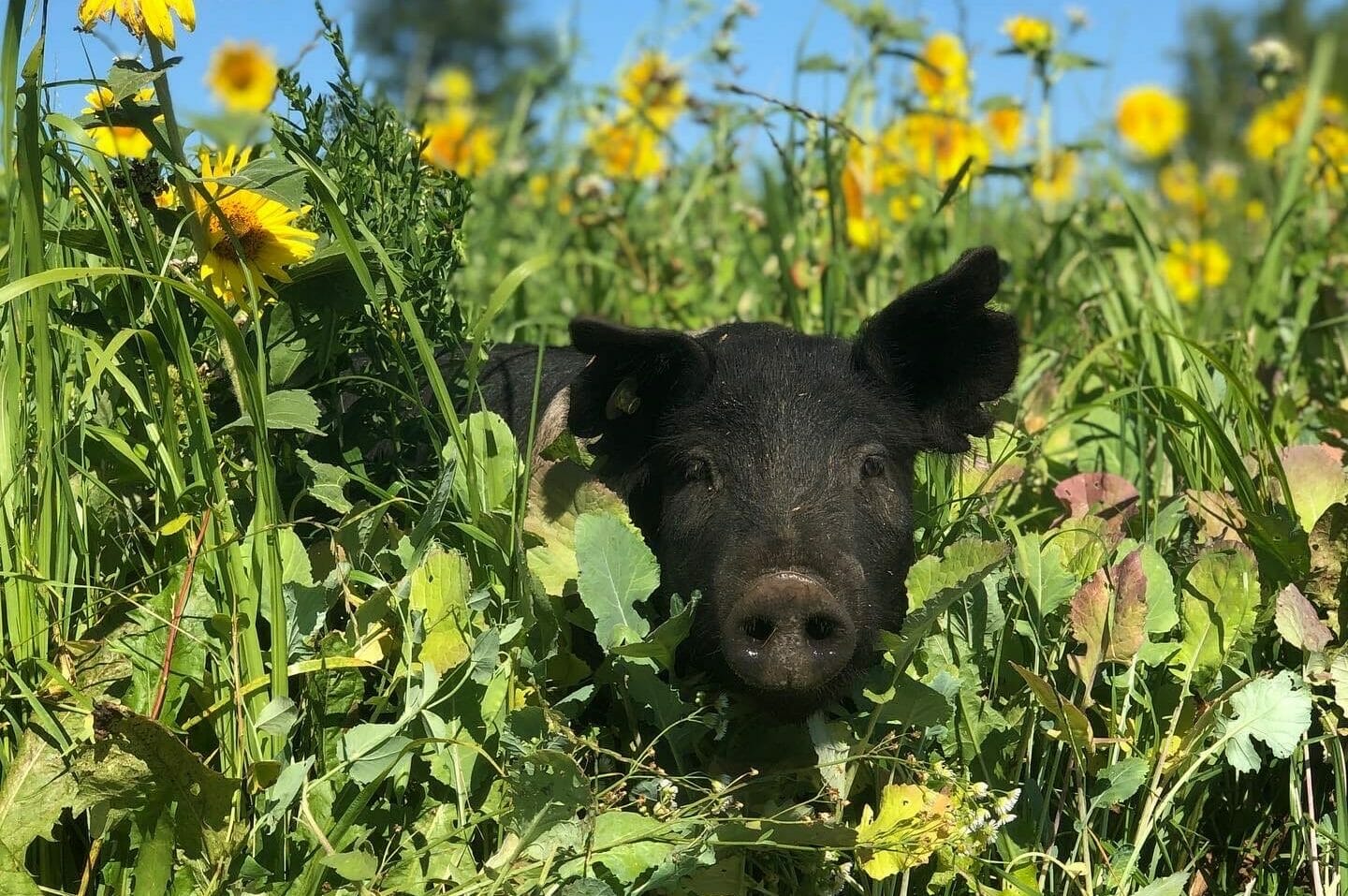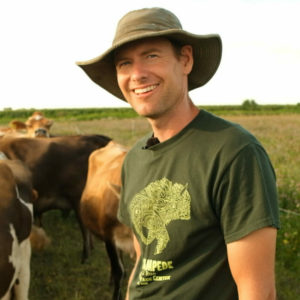Finding Clarity
About 12 years ago, life for Dayna Burtness had gotten to the point where her days were a draining toil: After working in her vegetable fields all day, she found herself too tired to cook dinner. Supper, for a time, was string cheese dipped in Nutella with a 2-liter of Coke.
For seven years, Dayna had been working full-time on vegetable farms. The grueling work had led her into a physical and mental downward spiral. “My body and brain were falling apart,” Dayna recalls. Grinding herself down into burnout, she simply kept doing what got her there in the first place. “I was sticking with it out of stubbornness, and ego, and just a lack of perspective.”
Until a class on Holistic Management made her pause.
Originally developed by Allan Savory in the context of grazing management, Holistic Management is a decision-making tool that has grown to include all aspects of life on and off the farm. Many books and classes are now dedicated to explaining the practice, but for Steve Riggins, of Cambridge, Iowa, the concept can be summarized in a sentence. “It’s going to sound stupid,” he says with a laugh, “but Holistic Management is managing everything as a whole.”
Using the example of a puzzle, Steve explains that “all the different pieces of what you’re doing on the farm have to fit together. All the puzzle pieces have to fit together for the same picture, rather than three different puzzles that you’re working on for three different pictures.” For Dayna, the puzzle was not fitting together. “With my life as it was, I needed to find peace,” she says. “Then I could figure out an enterprise that worked with the reality of what my body needed – and what the land needed.”
After applying what she learned in her Holistic Management class, the muddy water settled and what Dayna saw became Nettle Valley Farm in Spring Grove, Minnesota. Dayna and her husband, Nick Nguyen, got out of vegetable production and switched to raising pastured pigs. They are now entering their tenth season with this system, which Dayna says works much better for their lives.
An Invitation to Pause
The Holistic Management system comprises an extensive and rigorous eight-step process, which is further divided into sub-processes. This complexity can seem intimidating to those considering HM for the first time. However, rather than being rigid and prescriptive, the system can be adapted to what the user needs. All of the farmers interviewed for this story have cut out whole sections of the formal Holistic Management process to make it usable for them.
“Life happens and we don’t have the time we had when we were single, or a young married couple without children,” says Torray Wilson, who farms near Paullina, Iowa. “As time becomes more of a premium, we streamline things. We pick and choose the most valuable parts for us at this point. If we did everything HM says, that would be phenomenal but there’s not enough time in the day.”
The crux of Holistic Management, no matter how much is pared away, is that it creates space for deliberate reflection and examination, whether of the self, farm, finances, grazing or any other sphere of life. It is a practice that demands attention be paid to details and questions we might otherwise ignore amid the bustle of our daily tasks or moving from one emergency to the next. Where deliberation has succumbed to the pell-mell of modern life, those who use Holistic Management instead commit to carving out time to reflect.
“We try to look at why we do something and what’s going to make the biggest impact, rather than just going through the day-to-day,” says Steve, explaining how HM helps break his farm out of routine. “You’ve got to keep the farm running, but sometimes I focus on the daily task list to escape the larger things I should be doing.” Moving can give the illusion of progress. Sometimes, the harder action is to sit and let the waters clear.
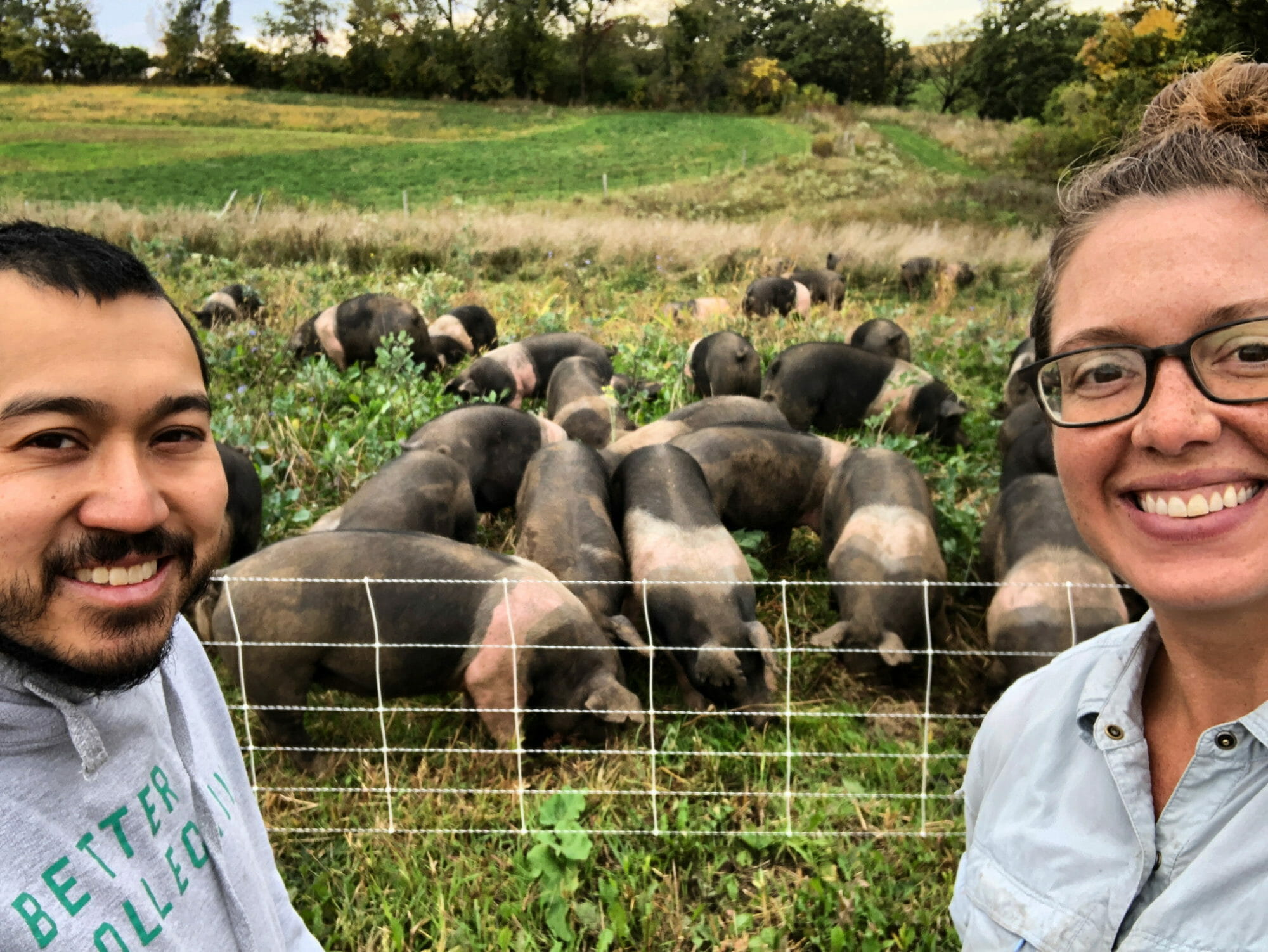
Nick Nguyen and Dayna Burtness pose with their herd of Hampshire hogs on their farm near Spring Grove, Minnesota.
Dayna uses HM as “a tool to help us step back and look at the bigger picture of ourselves and what we want our lives to be – to assess whether or not the farm in its current state is supporting or detracting from that vision.”
Torray emphasizes that the aim of Holistic Management is to get people to focus on what they want, not what they don’t want. “Farmers are notorious for only looking at the weeds, or the problem part of the field,” he says, “instead of looking at the part that’s going really well and finding out why that part is succeeding and replicating that over the rest of the field.”
Asking Questions
Because of its adaptability, how practitioners apply the reflection part of Holistic Management differs by user and by need.
For Dayna, reflecting means closely interrogating her reasons for doing something. “The most powerful piece [of Holistic Management] that stops me in my tracks when I’m thinking about a new idea is the cause-and-effect question,” she says. “Does this action address the root cause of the problem? I think ‘Dayna, what is the actual problem in your life that you’re trying to solve with this? Are you actually addressing the deep-down causes of this, or are you trying to find a new shiny thing to distract you from the root problem?’”
Torray agrees. “We don’t do that very often in farming. We just address the first problem, so we’re constantly putting Band-Aids on instead of getting to the heart of the issue.”
For others, the most clarifying step of the reflection process is determining who is on your farm team. In Jon Bakehouse’s case, he applied HM when he had to expand his team. “I always thought, well it’s my farm, I’ve got to be the creative one and solve the problems myself. But no,” says Jon, who farms near Hastings, Iowa. “HM shed some light on people in my network I had initially overlooked who could help offer that human creativity.”
Steve struggled with the inverse and used HM when he had to trim his team. “I realized I was putting them in as roadblocks, without meaning to. Once we removed those issues and got it down to our core, I think that’s when things moved the best.”
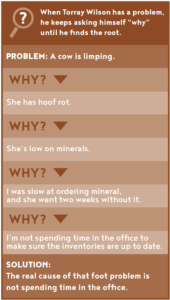 For questions like this – and others – Jon sees Holistic Management as a valuable way to find common language and vision. Torray holds this as a central pillar for his family. “That’s where the power comes from – having people sharing a vision, and working towards a vision even when things are hard. Sometimes you don’t have to have the most talented athletes, you just have to have a team that’s communicating and functioning well together.”
For questions like this – and others – Jon sees Holistic Management as a valuable way to find common language and vision. Torray holds this as a central pillar for his family. “That’s where the power comes from – having people sharing a vision, and working towards a vision even when things are hard. Sometimes you don’t have to have the most talented athletes, you just have to have a team that’s communicating and functioning well together.”
Like any world-framing philosophy, Holistic Management is not something that can be mastered and finished. It is a practice. Those who go through the trainings are called HM practitioners, not masters. The waters are always turbulent, but every now and then they can be settled enough to see.
Dayna and Nick will host a field day this summer on their farm in Spring Grove, Minnesota. Visit the field day page on our website for more info and to RSVP to attend.

